介绍
In the daily operation of rehabilitation centres, the question of how to spread rehabilitation knowledge more efficiently, improve patient experience, and create a positive rehabilitation atmosphere is one that every manager thinks about.
So, can LED显示屏 become the “new assistant” of rehabilitation centres? What unexpected changes can it bring to rehabilitation centres?
目录
1. Feasibility analysis of installing LED display screens in rehabilitation centres
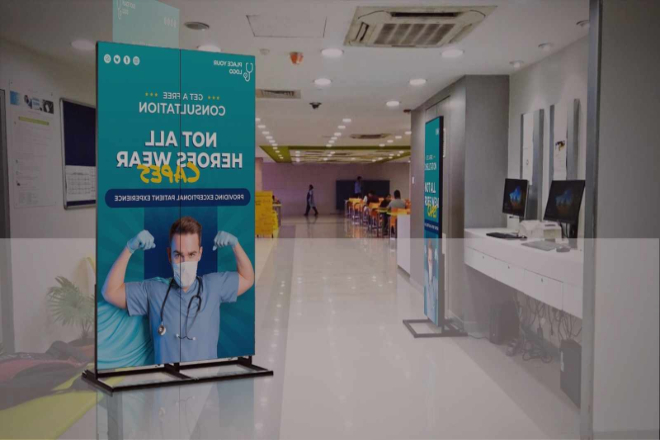
Rehabilitation centres are, of course, suitable for installing LED display screens.
Rehabilitation centres are mainly places to help people restore their physical functions.
Patients and their families must be informed of some rehabilitation knowledge, such as how to do rehabilitation training and what to pay attention to.
LED display screens can come in handy. They can play some rehabilitation videos and text introductions, which are much clearer than simply relying on medical staff to explain verbally.
Moreover, rehabilitation centres also have to show themselves, such as some powerful doctors and advanced equipment.
Once the display screen is placed, patients and their families will feel more confident and trust the rehabilitation centre more.
Technically speaking, it is quite simple to install LED display screens now. It consumes less power, is bright, and lasts for a long time. Just find a suitable location.
For example, in the lobby or waiting area, it is enough to install it, which will not cause trouble to the rehabilitation centre, nor will it affect the patient’s rehabilitation.
2. Advantages of installing LED display screens in rehabilitation centres
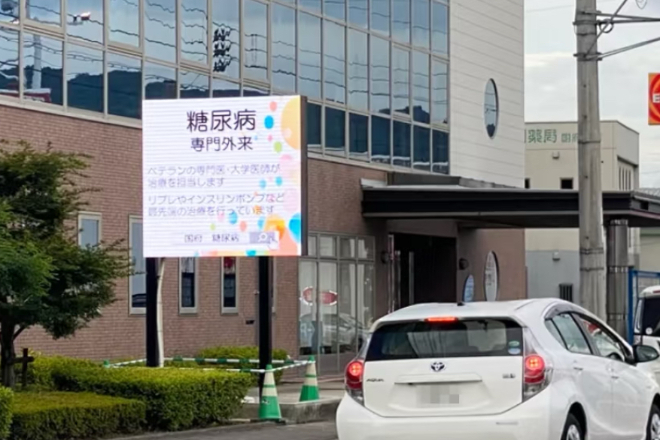
There are many benefits to installing LED display screens in rehabilitation centres, which are mainly reflected in three aspects: information dissemination, environmental atmosphere and rehabilitation training.
1). Information dissemination and communication
In rehabilitation centres, patients and their families are most afraid of information asymmetry. With LED display screens, rehabilitation knowledge can be updated at any time.
For example, in the movement demonstration and dietary suggestions of rehabilitation training, patients follow the video to learn, the movements are more standard, and the rehabilitation effect is better.
In addition, the display screen can also publish the patient’s rehabilitation plan and treatment schedule, which can be seen by family members at any time, and they feel more at ease.
If an interactive area is set up, patients and their families can leave messages, share their experiences, support each other, and have more energy for rehabilitation.
2). Creating an environmental atmosphere
Patients in rehabilitation centres are under great pressure, feel uncomfortable, and are prone to anxiety.
LED display screens can play soothing natural landscape videos, such as the sea and forest, which help patients relax when watching.
The content can also be adjusted according to different stages. For example, inspirational rehabilitation stories can be played to encourage patients who have just been admitted to the hospital.
For patients in the middle stage of rehabilitation, relaxing music can be played to relieve fatigue.
Modern LED display screens can also display the advanced equipment and professional team of the rehabilitation centre, leaving a good impression on patients and their families, and improving their reputation.
3). Rehabilitation training assistance
For some patients with poor cognitive function, LED display screens can provide visual stimulation training through colourful pictures to help the brain recover.
For example, design some simple graphic recognition and colour matching games, and patients can play while recovering, which is not boring at all.
For those patients who need long-term rehabilitation, the display screen can show their rehabilitation progress in the form of charts and curves, so that patients can see their progress and have more motivation to stick to it.
Of course, when displaying this information, pay attention to privacy protection, such as setting it in an exclusive area for patients and their families, or using password protection, which is convenient and safe.
3. A rehabilitation centre is suitable for installing LED display screens
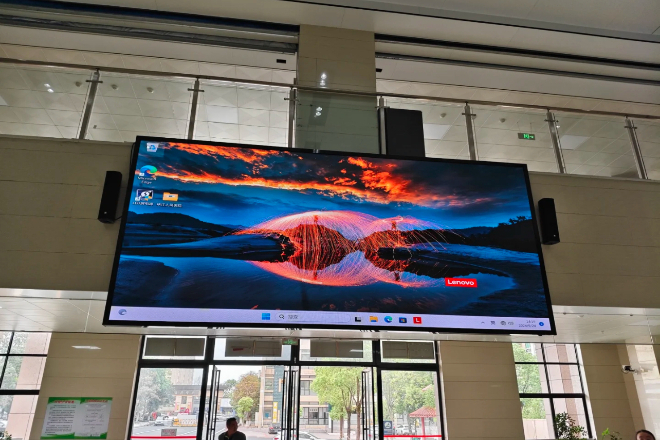
1). Lobby
The lobby is the “facade” of the rehabilitation centre, and patients and their families can see it as soon as they enter the door.
A large screen can be installed here to display the introduction of the rehabilitation centre, service items, and expert introductions.
For example, when new patients and their families just enter the door, they can see the content on the screen and get a general idea of what the rehabilitation centre does and which great doctors are there.
At the same time, some rehabilitation knowledge videos can be played, so that patients and their families can learn something useful while waiting, and they will not be bored.
2). Waiting area
Patients are often anxious when waiting in the waiting area. At this time, installing a screen to play some soothing music and natural landscape videos, such as sea waves and forest birdsong, can help them relax.
If some rehabilitation training demonstration videos are played, patients can also familiarise themselves with the training movements in advance, so that they will not be so panicked when the formal training begins.
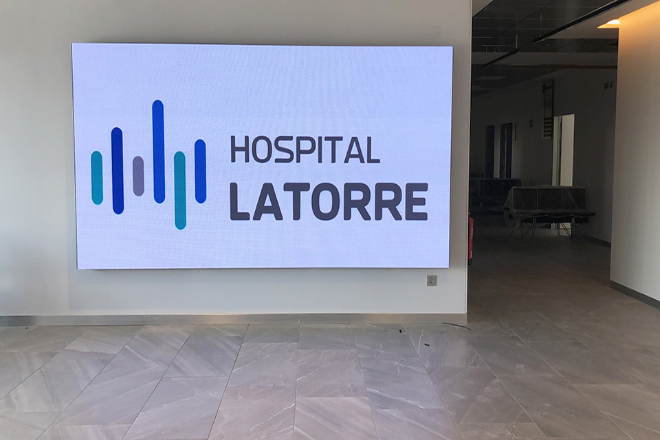
3). Rehabilitation training area
The rehabilitation training area is where patients exercise. The screen can show rehabilitation training movement demonstrations, so that patients can follow them when training, and the movements are more standardised.
For example, some complex rehabilitation movements may not be remembered by patients just by listening to the doctor, but it is much easier to understand by watching the video on the screen.
Patients with poor cognitive function can also use colourful pictures on the screen to do visual stimulation training to help restore brain function.
In addition, the patient’s rehabilitation progress is displayed in the form of a chart. The patient sees that he is making progress every day and has more confidence to persist.
4). Corridor
The corridor of the rehabilitation centre is often walked back and forth by patients and their families.
A screen in the corridor can display the honorary certificates and success cases of the rehabilitation centre so that patients and their families can see the strength of the rehabilitation centre and feel more confident.
If you play some small videos on rehabilitation knowledge, patients and their families can learn something when they are tired and take a break.
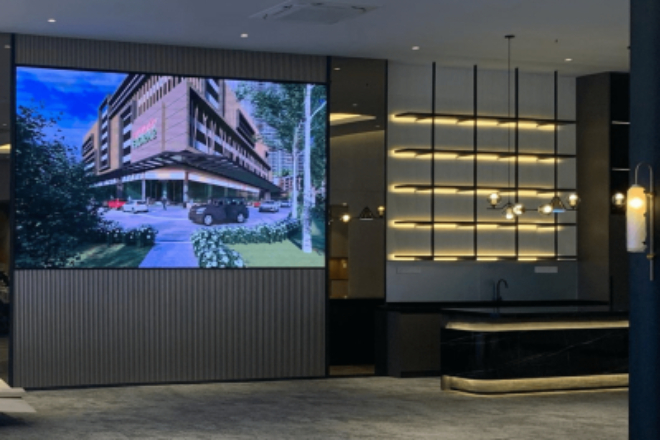
5). Patient rest area
The patient rest area is a place for patients to relax. Installing a screen here, playing soothing music, and watching relaxing videos can help patients relax.
If you show some of the patients’ experiences after rehabilitation, patients will be more motivated when they see the examples of others’ successful rehabilitation.
4. Implementation suggestions
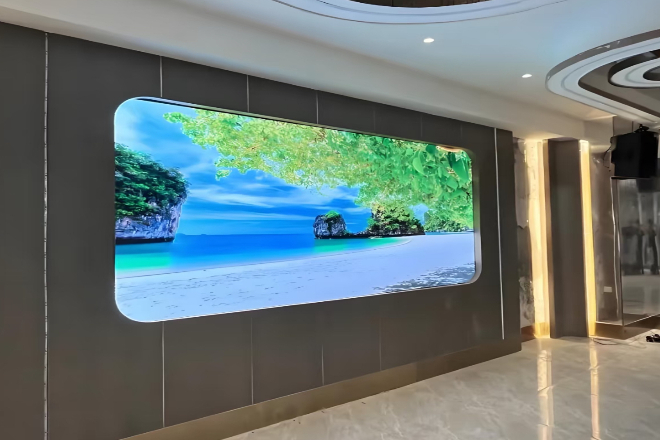
Before installing the LED display, calculate the budget first, and include the cost of the screen, installation, line modification and later maintenance.
If you don’t have much money, install small screens in the lobby and waiting area first, and then add more later.
Talk to medical staff to see where they think it is convenient to install screens, such as in the rehabilitation training area.
Then, the patient and their family should be asked what content they want to watch, such as rehabilitation knowledge and soothing videos.
Finally, look at the layout of the rehabilitation centre.
The lobby screen should be conspicuous, the waiting area should be of appropriate height, the rehabilitation training area should not block the view, and the corridor screens should be installed every other section.
When choosing a screen, the 亮度 should not be too high, 300-500 nits is enough, and the resolution should be at least HD; 4K is better.
The screen size is determined according to the location; the lobby is larger, and the waiting area and corridor are smaller.
In terms of function, if the budget is sufficient, choose a touch screen for easy message and inquiry; if the budget is tight, use a normal screen first.
The interface should have HDMI and USB to facilitate the connection of equipment and update content.
Choose a big brand, the quality is guaranteed, and the after-sales service is convenient. Don’t just go for cheap.
Find a professional installation team skilled in technology who can ensure that the screen is firm and the line is standardised. Before installation, let the construction workers look at the site first and make a plan.
During construction, check the power supply and network lines. If the power supply is insufficient, modify it.
If the network is not good, add equipment. During installation, pay attention to the screen fixation, do not shake or fall. After installation, test whether the screen display, sound, and touch functions are normal.
Content is very important. Rehabilitation knowledge videos can be customised or shot by yourself, and soothing videos can be found through free resources or bought from genuine materials.
The patient information display interface should be concise and clear, and privacy should be protected.
The playback system uses professional software, sets the playlist, and automatically loops.
There are interactive functions to ensure that messages and inquiries run normally and respond in time.
Arrange special personnel to update the content, check the screen status regularly, and adjust the content according to feedback.
5. 结论
Through the above analysis, we can see that LED display screens can not only bring convenience to information dissemination for rehabilitation centres, but also effectively improve patients’ psychological experience and rehabilitation effects.
最后,如果你想了解更多关于LED显示屏的信息, 请与我们联系。
